Step 2. Debug your first Python application
Finding out the origin of the problem
Remember, in the previous tutorial you've created and run the Car script? Let’s play a little more with it and modify the average_speed function as follows:
def average_speed(self):
return self.odometer / self.timeLet's see what happens when we start our script up, and try to find out our average speed:
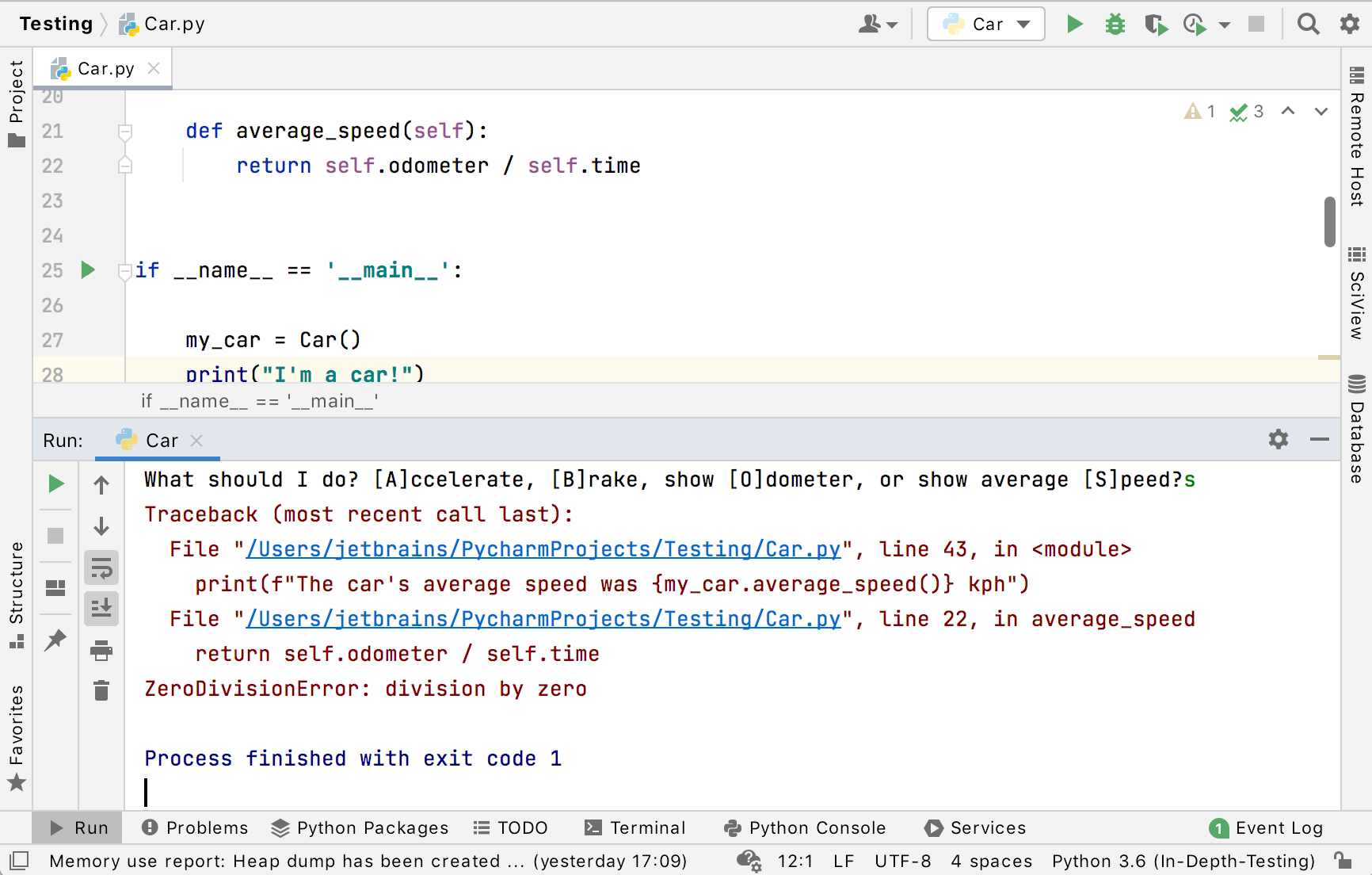
Oops... PyCharm reports a runtime error: a ZeroDivisionError.
Let’s dig a little deeper into our code to find out what’s going wrong. We can use the PyCharm debugger to see exactly what’s happening in our code. To start debugging, you have to set some breakpoints first. To create breakpoints, just click in the gutter
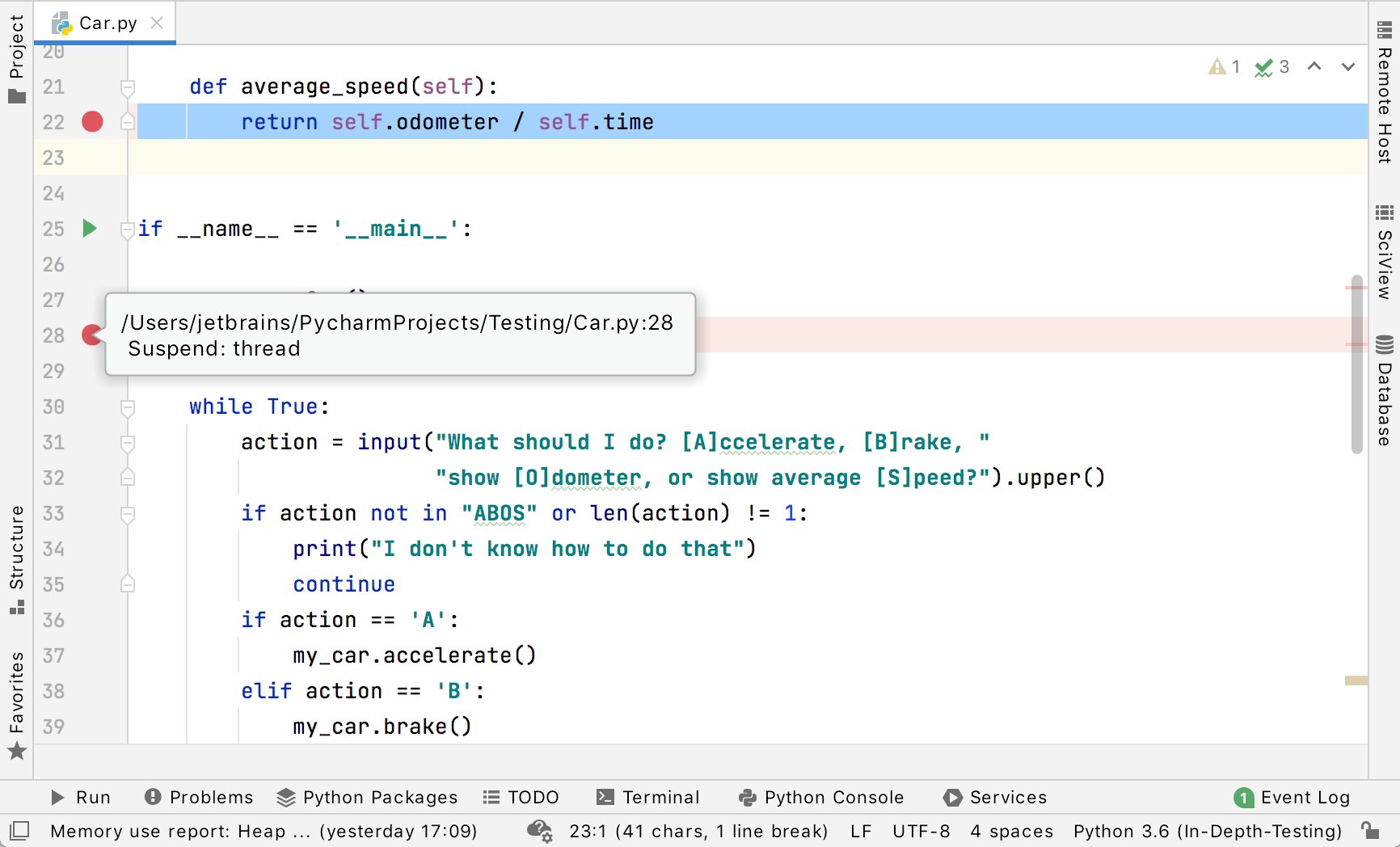
Next, click the ![]() icon in the gutter, next to the
icon in the gutter, next to the main clause, and choose Debug 'Car'.
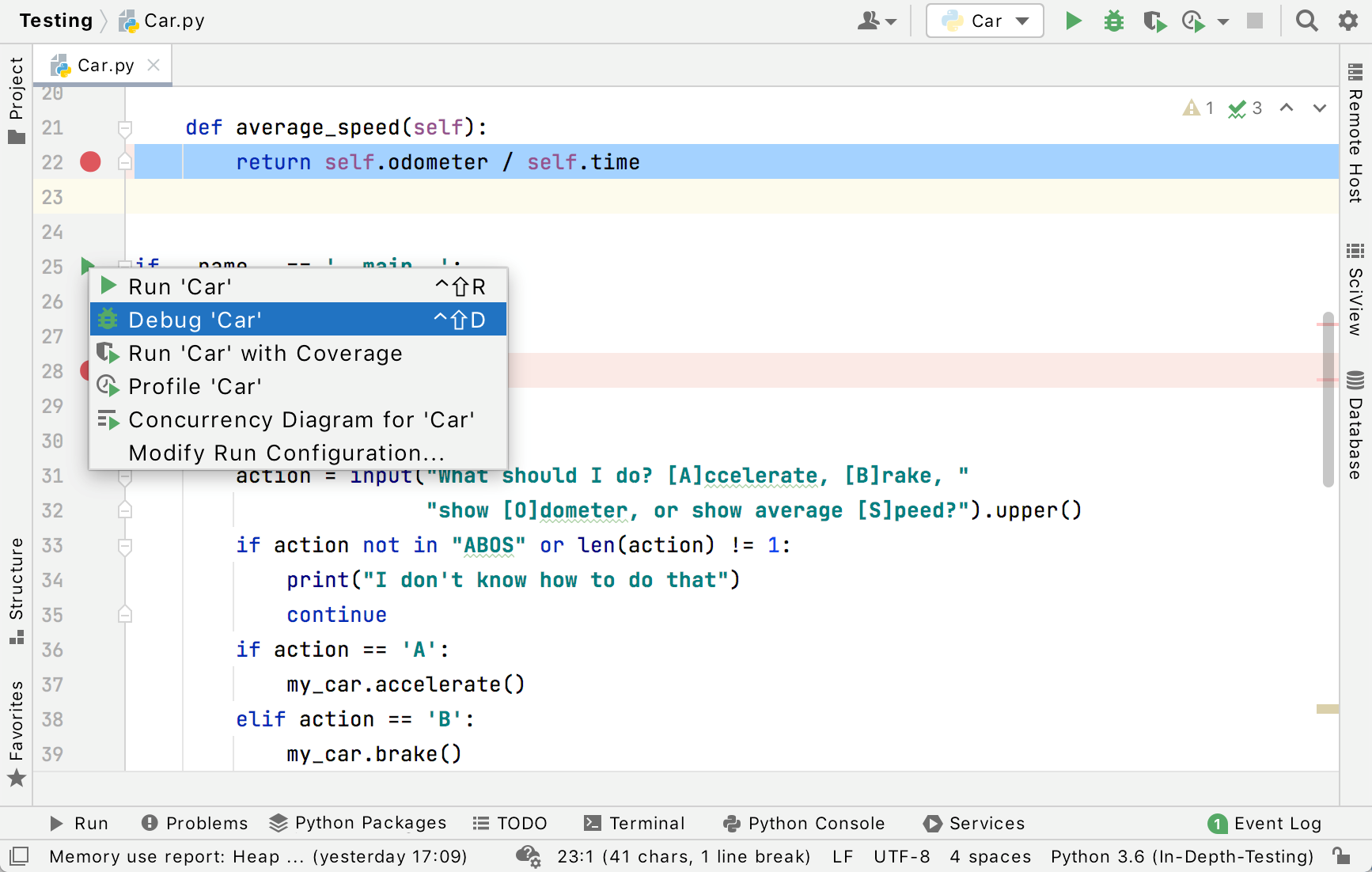
PyCharm starts a debugging session and shows the Debug tool window
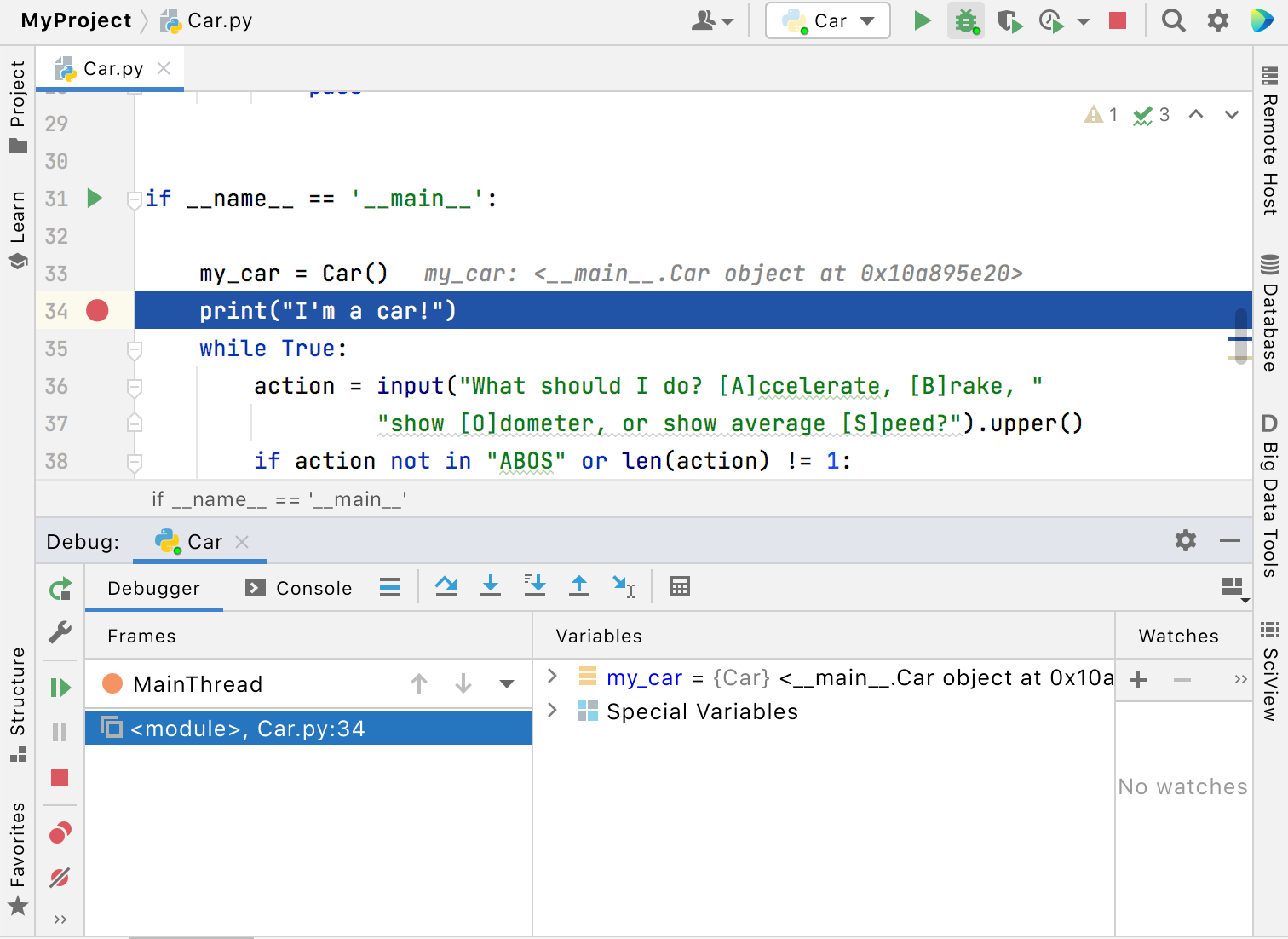
Click the button to proceed with the script execution and in the Console tab, enter
S and press Enter:
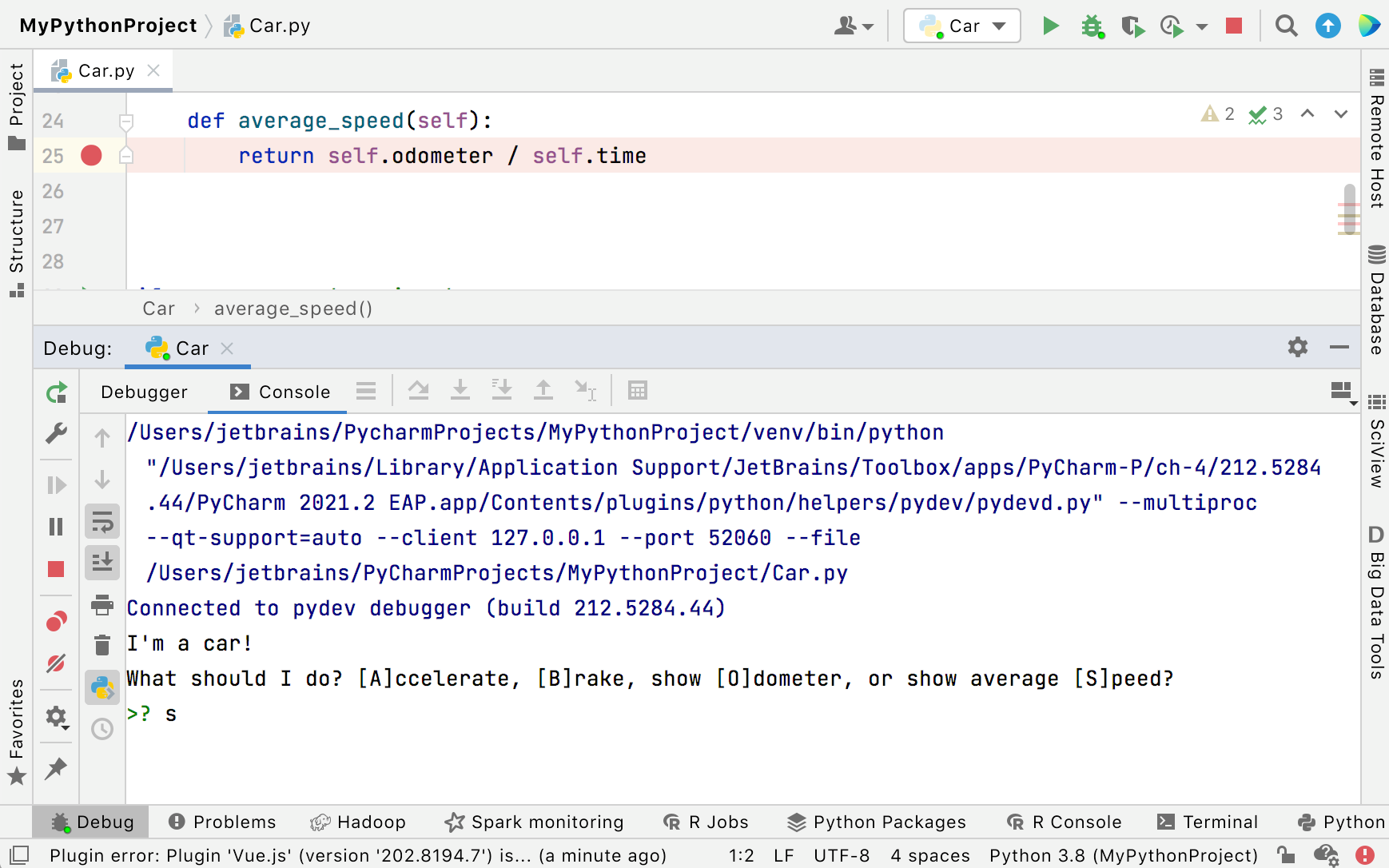
Click the button to resume the script execution. The exception is here. Another breakpoint appeared as well: by default PyCharm will halt for any exception that wasn't caught in your code, and it'll show an icon of a breakpoint with a lightning bolt.
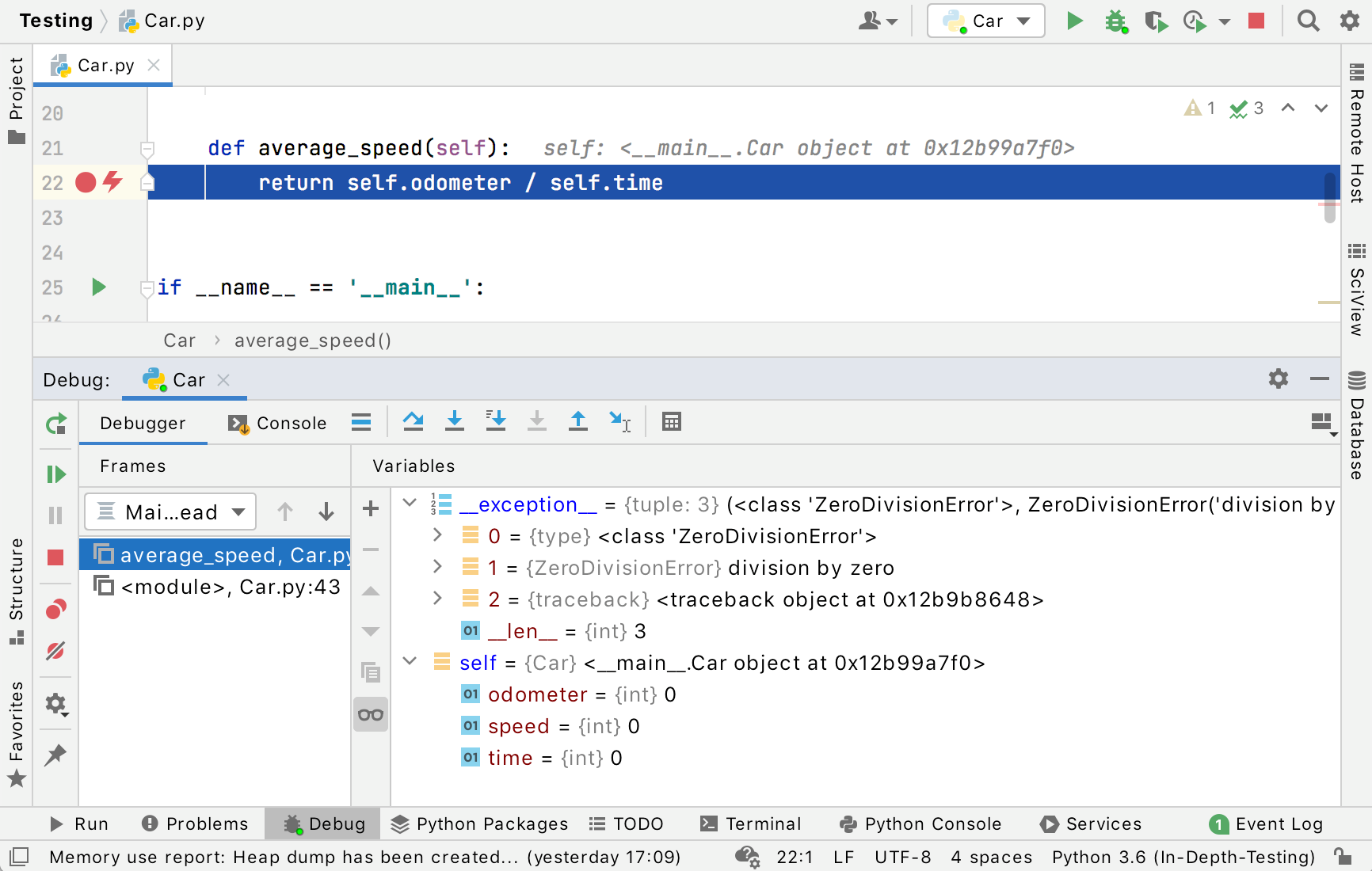
The debugger also shows the error message. So we’ve found our problem. You can also see in the debugger, that the value self.time is equal to zero:
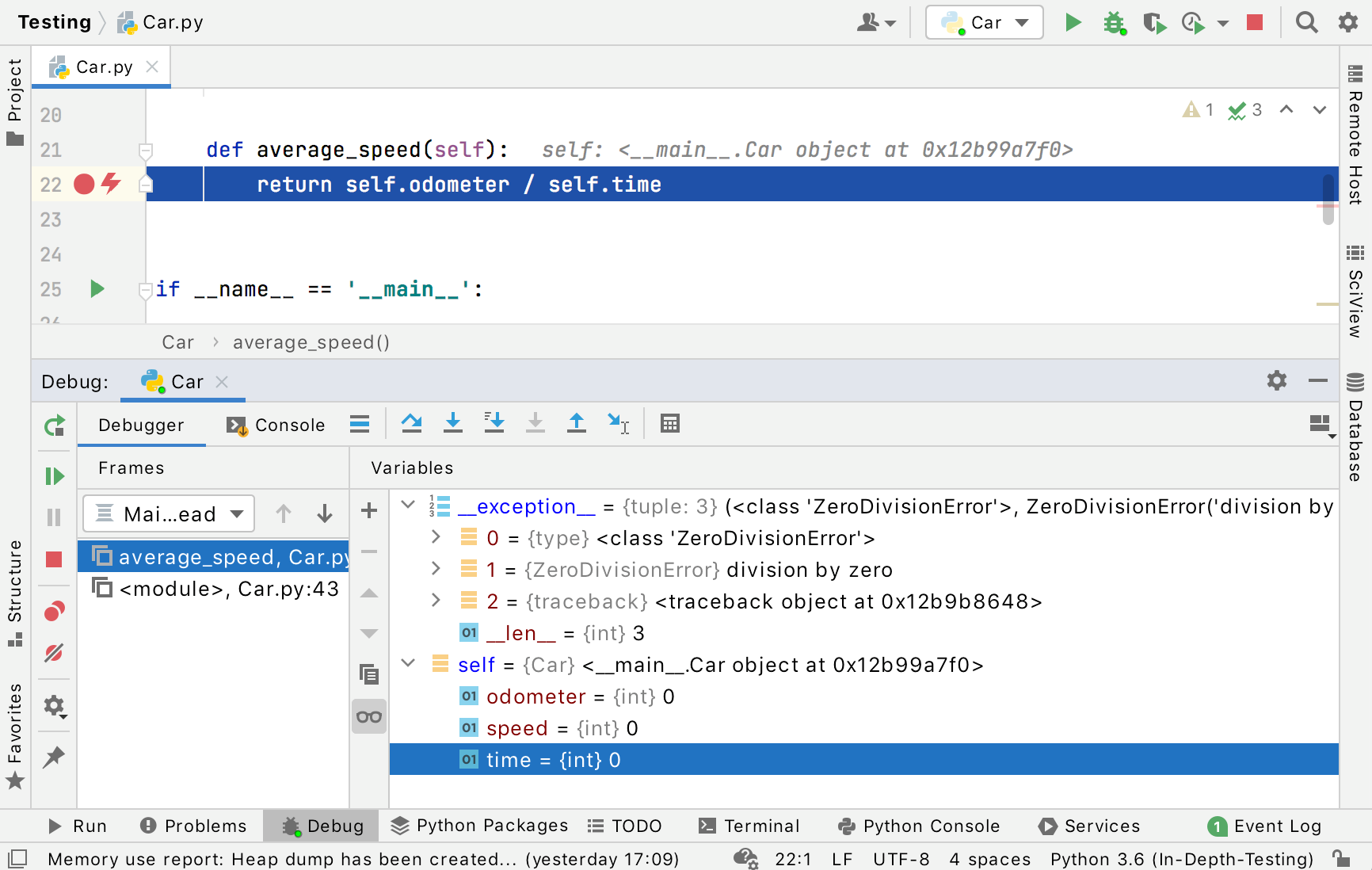
Surrounding code
To avoid running into the same problem again, let's add an if statement to check whether the time equals zero. To do that, select the statement return self.odometer / self.time in the method average_speed and then press Ctrl+Alt+T (Code | Surround with):

PyCharm creates a stub if construct, leaving you with the task of filling it with the proper contents.
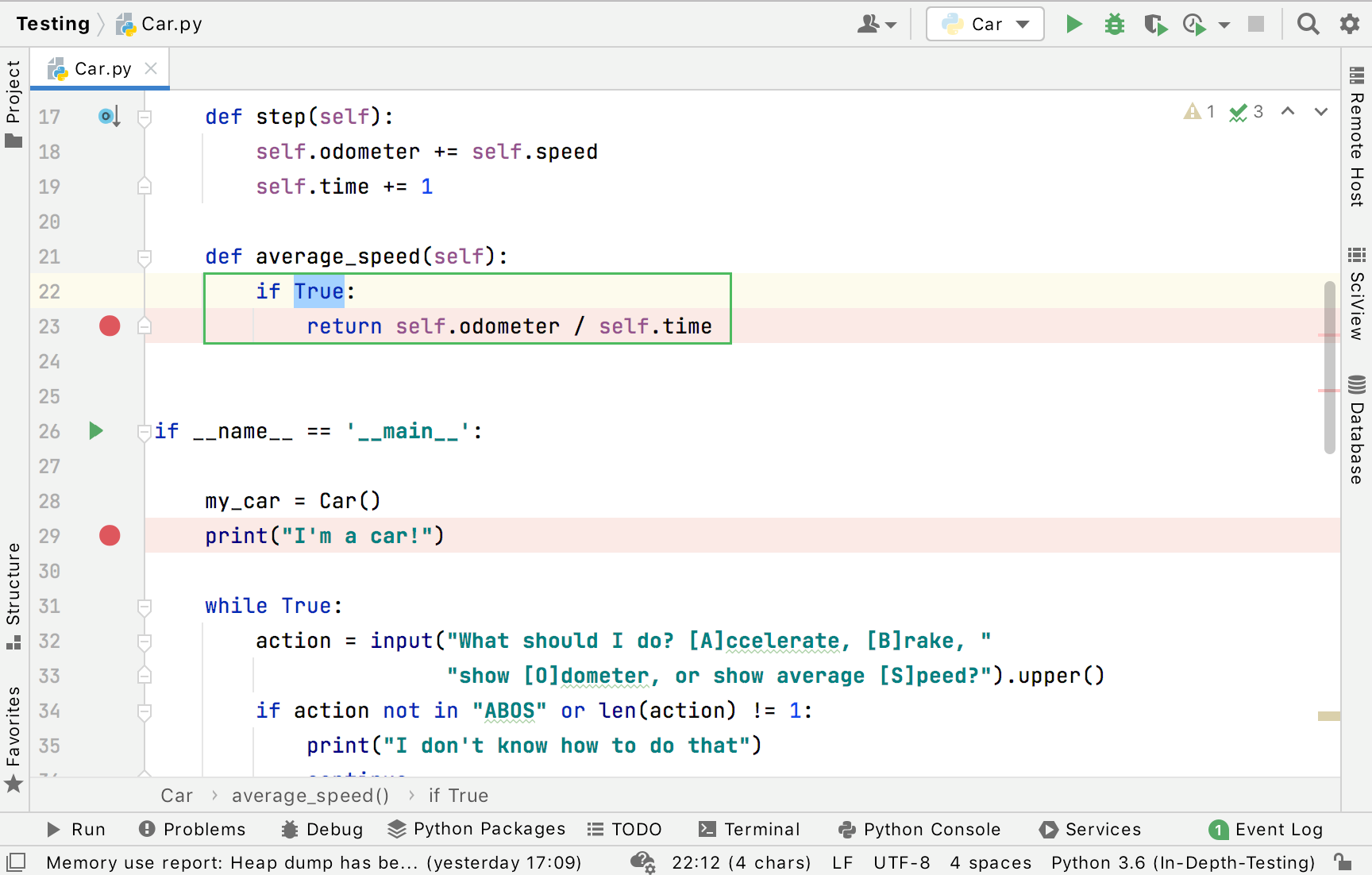
After editing, we get the following:
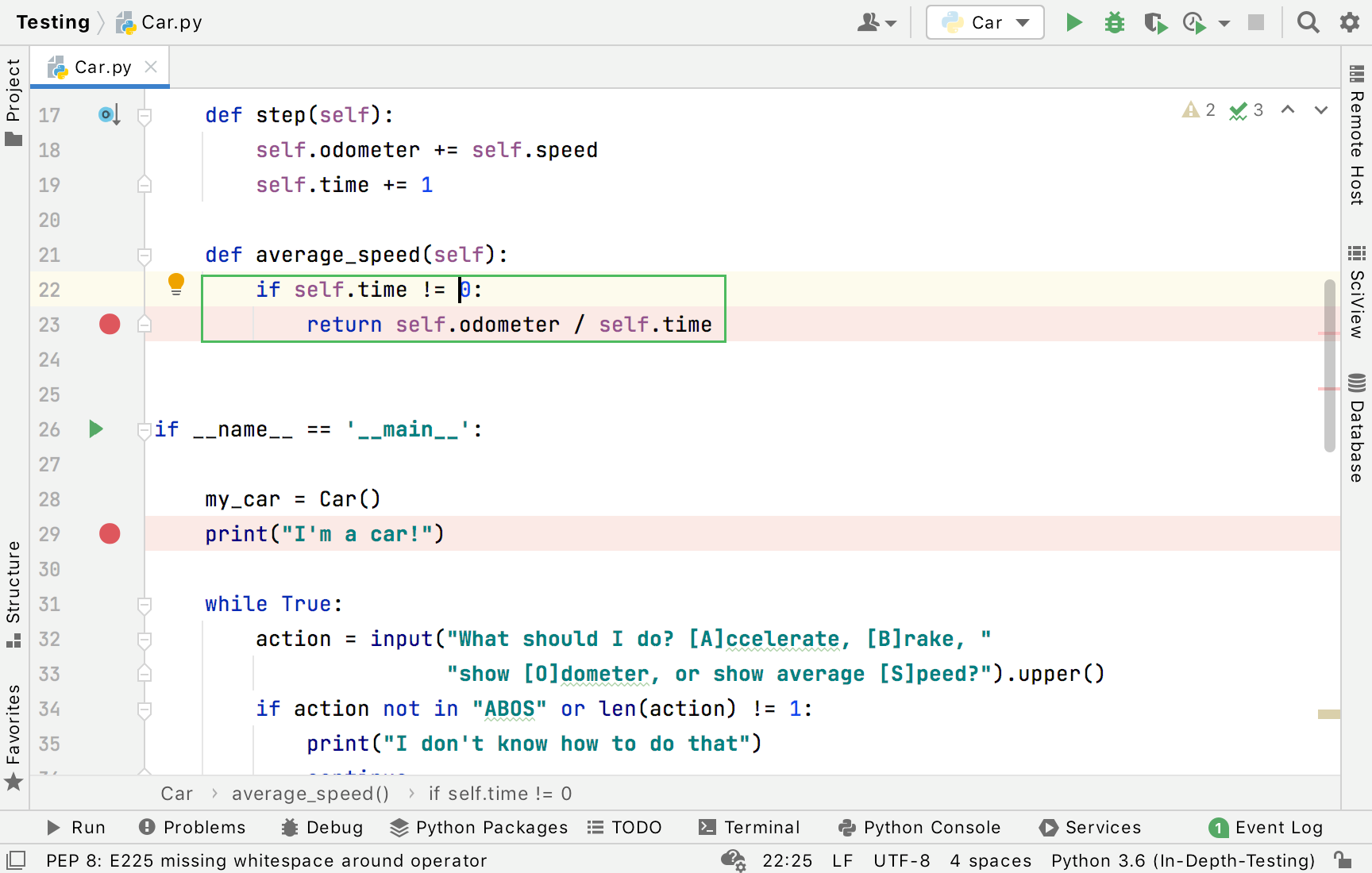
Let's take a closer look to see how the debugger can show your what your code is doing.
Debugging in detail
The Debug tool window shows dedicated panes for frames, variables, and watches, and the console, where all the input and output information is displayed. If you want the console to be always visible, you can drag it to one of the PyCharm window's edges.
Stepping
If you want to see what your code does line by line, there's no need to put a breakpoint on every line, you can step through your code.
Let's see what it looks like to step through our example program: click the button, go to the Console to ask for the car's average speed (type 'S'), and we can see that we press our breakpoint.
We can use the stepping toolbar buttons to choose on which line we'd like to stop next.
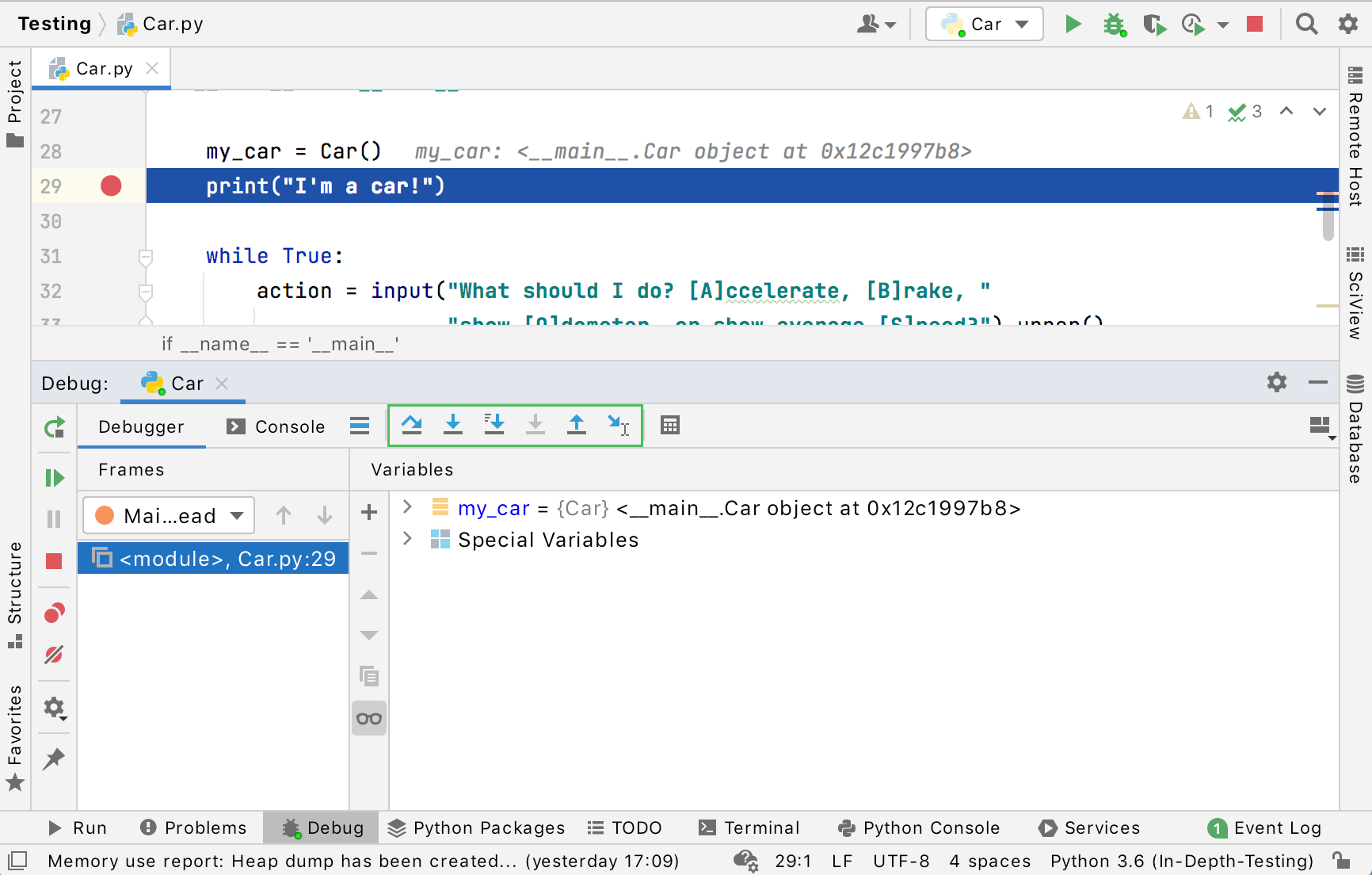
For example, click the Step Over button and see the blue marker moving to the next line of code:
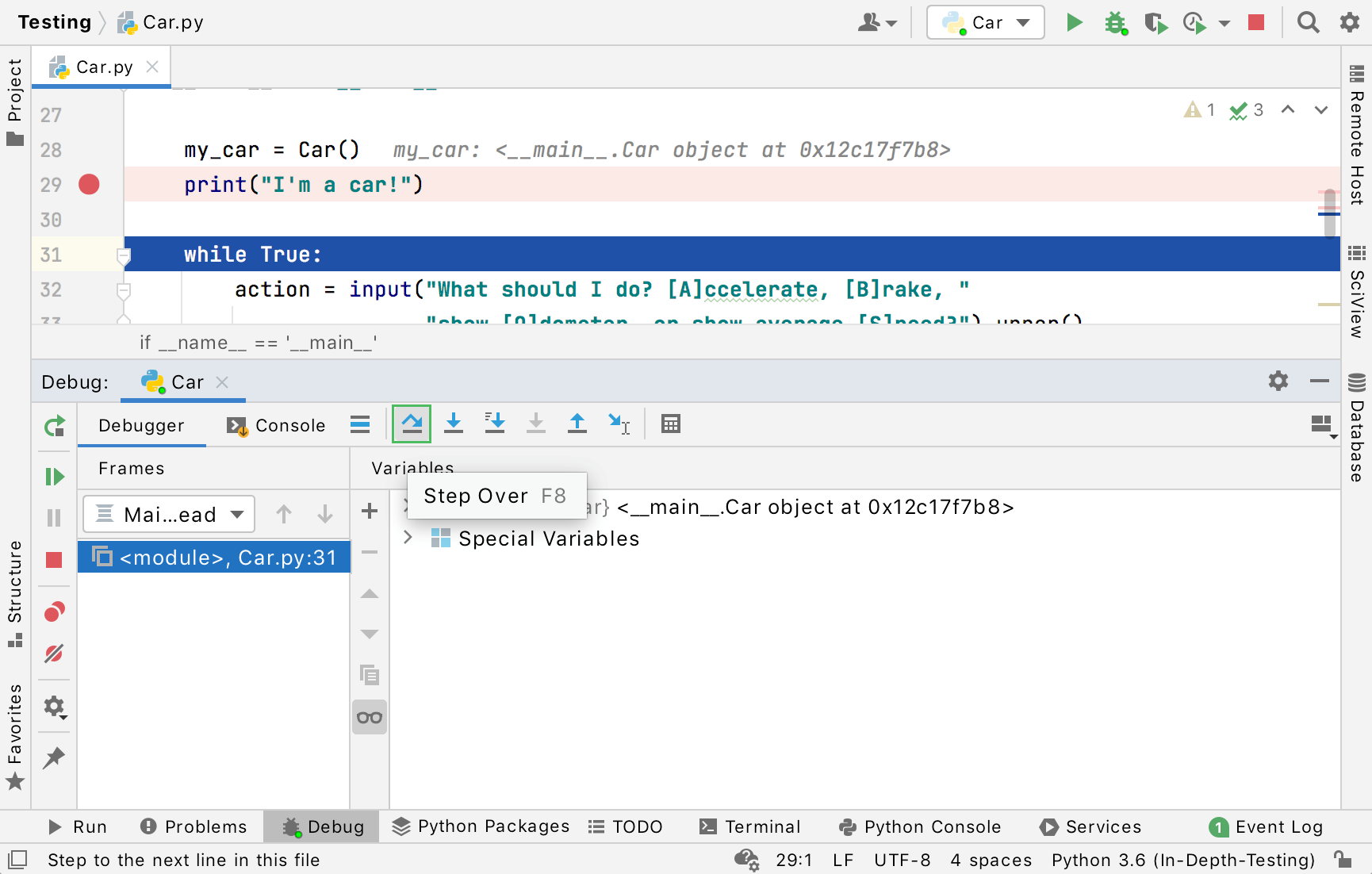
If you click the Step Into button , you will see that after the line
action = input("What should I do? [A]ccelerate, [B]rake, " "show [O]dometer, or show average [S]peed?").upper() the debugger goes into the file parse.py:
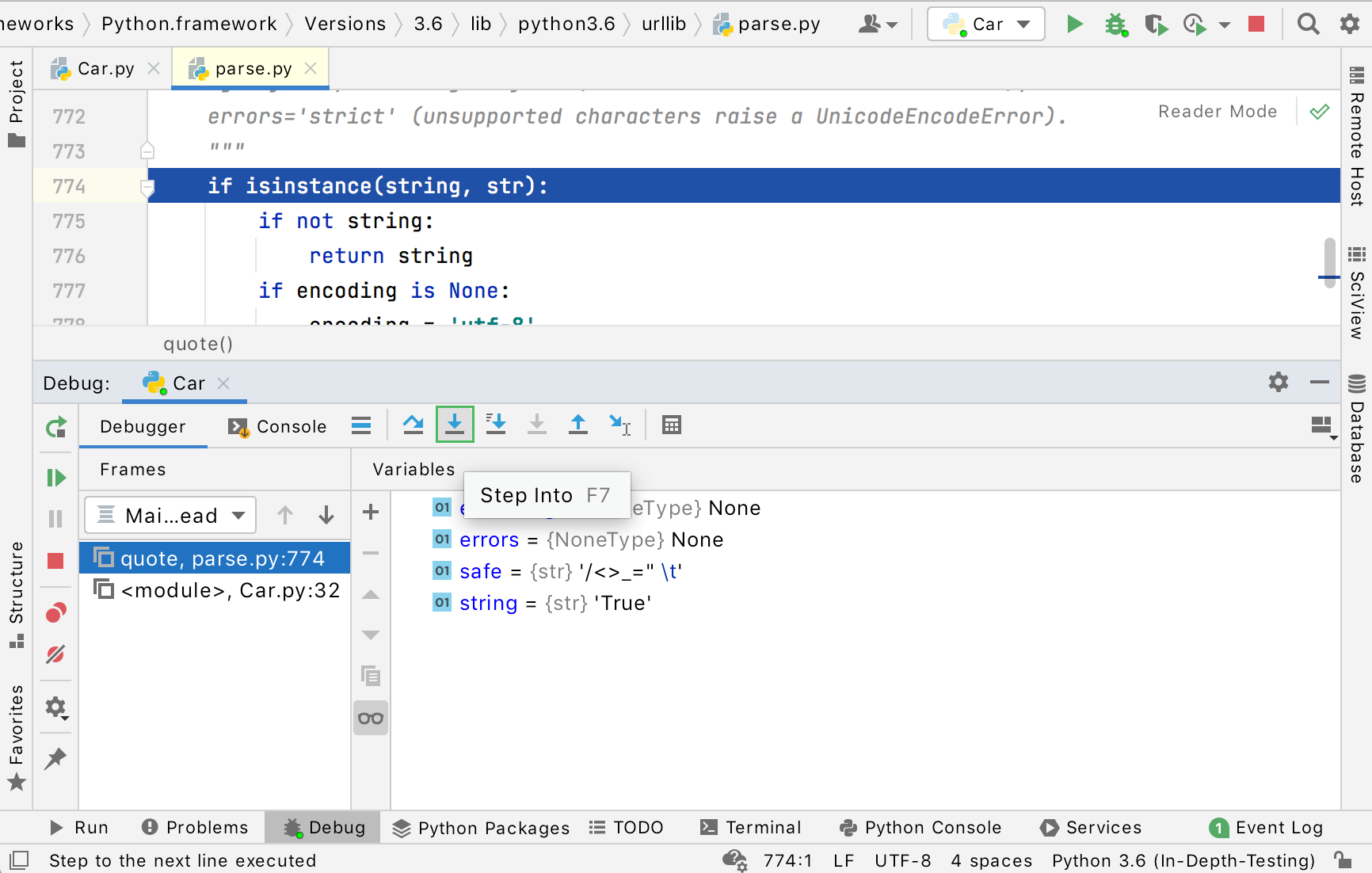
However, if you continue using , you'll see that your application just passes to the next loop:
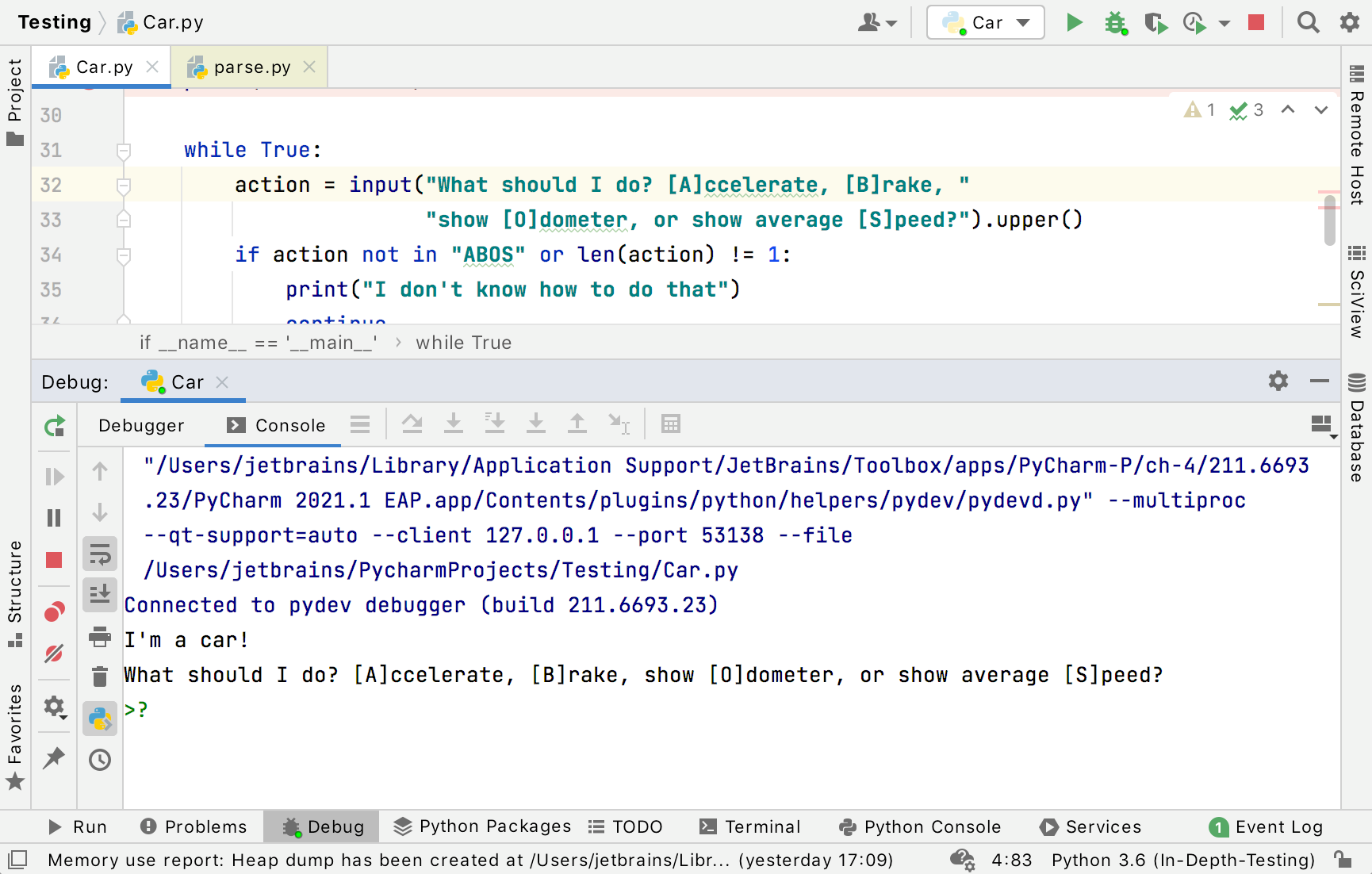
If you want to concentrate on your own code, use the Step Into My Code button - thus you'll avoid stepping into library classes.
See the Stepping toolbar and Step through the program sections for details.
Watching
PyCharm allows you to watch any variable. Just click on the toolbar of the Watches tab, and type the name of the variable you want to watch - let it be
my_car.time. Note that code completion is available here:
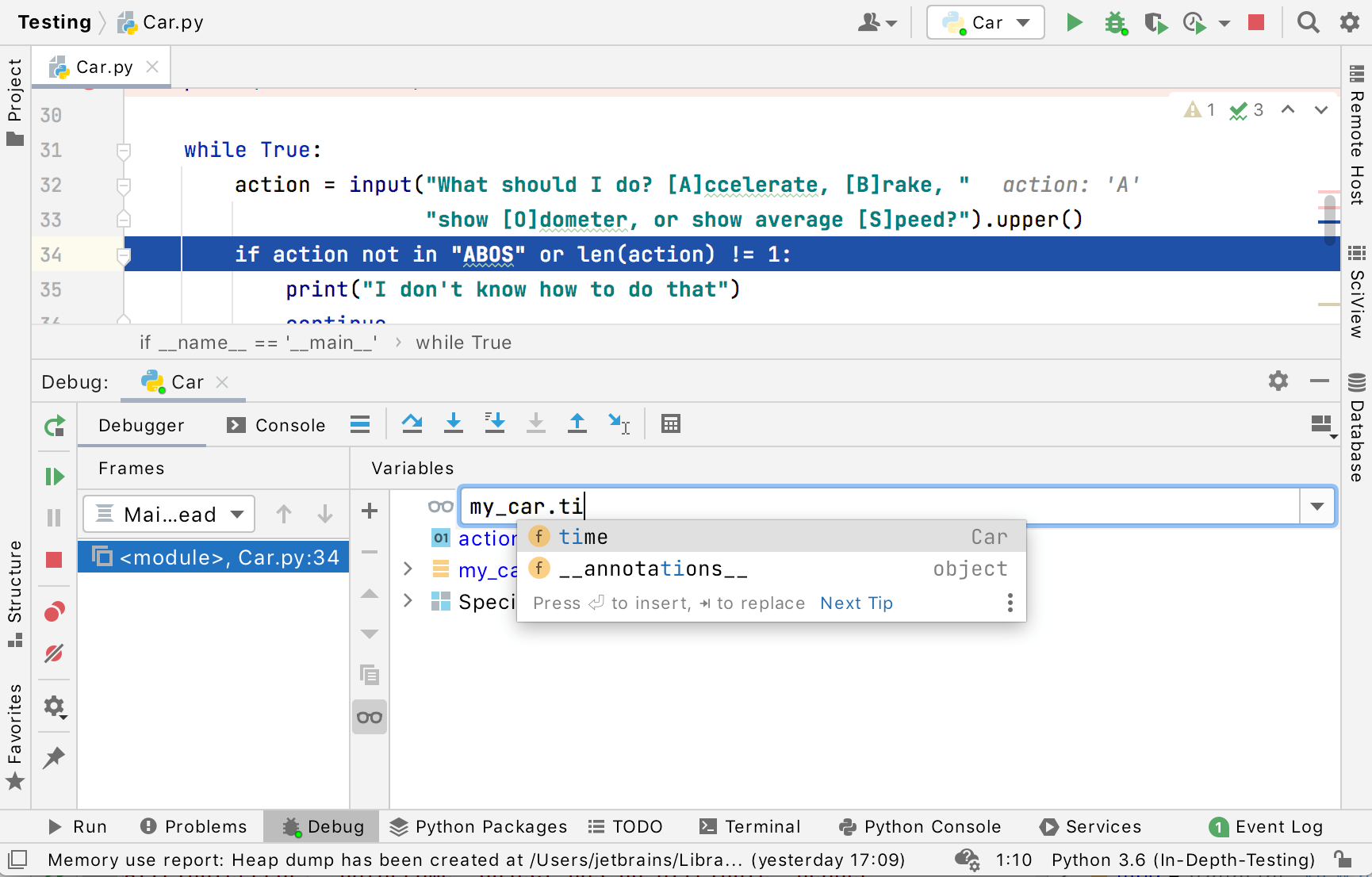
At first, you see the time equals nil - it means that the variable is not yet defined:
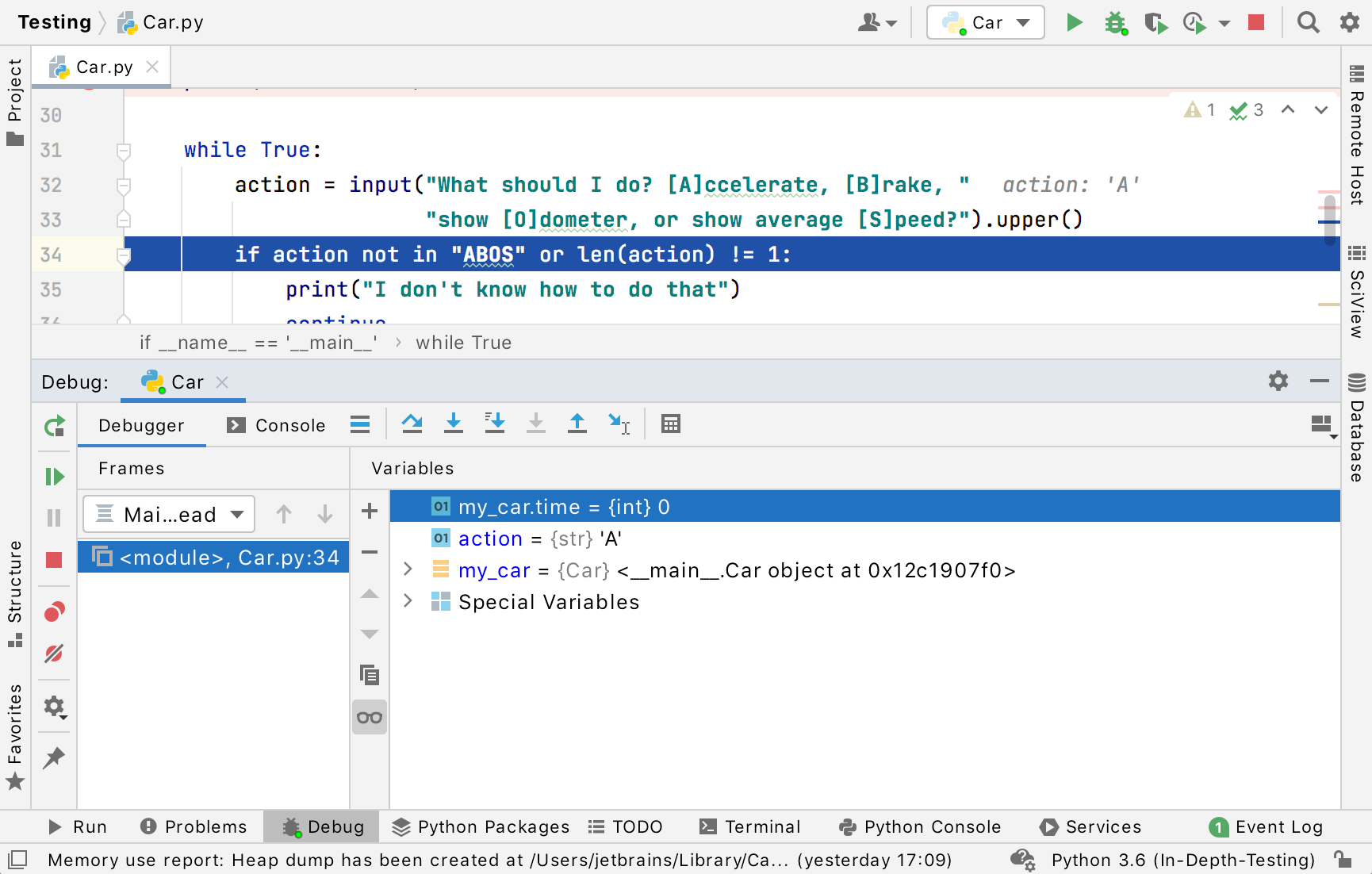
However, when the program execution continues to the scope that defines the variable, the watch gets the following view:
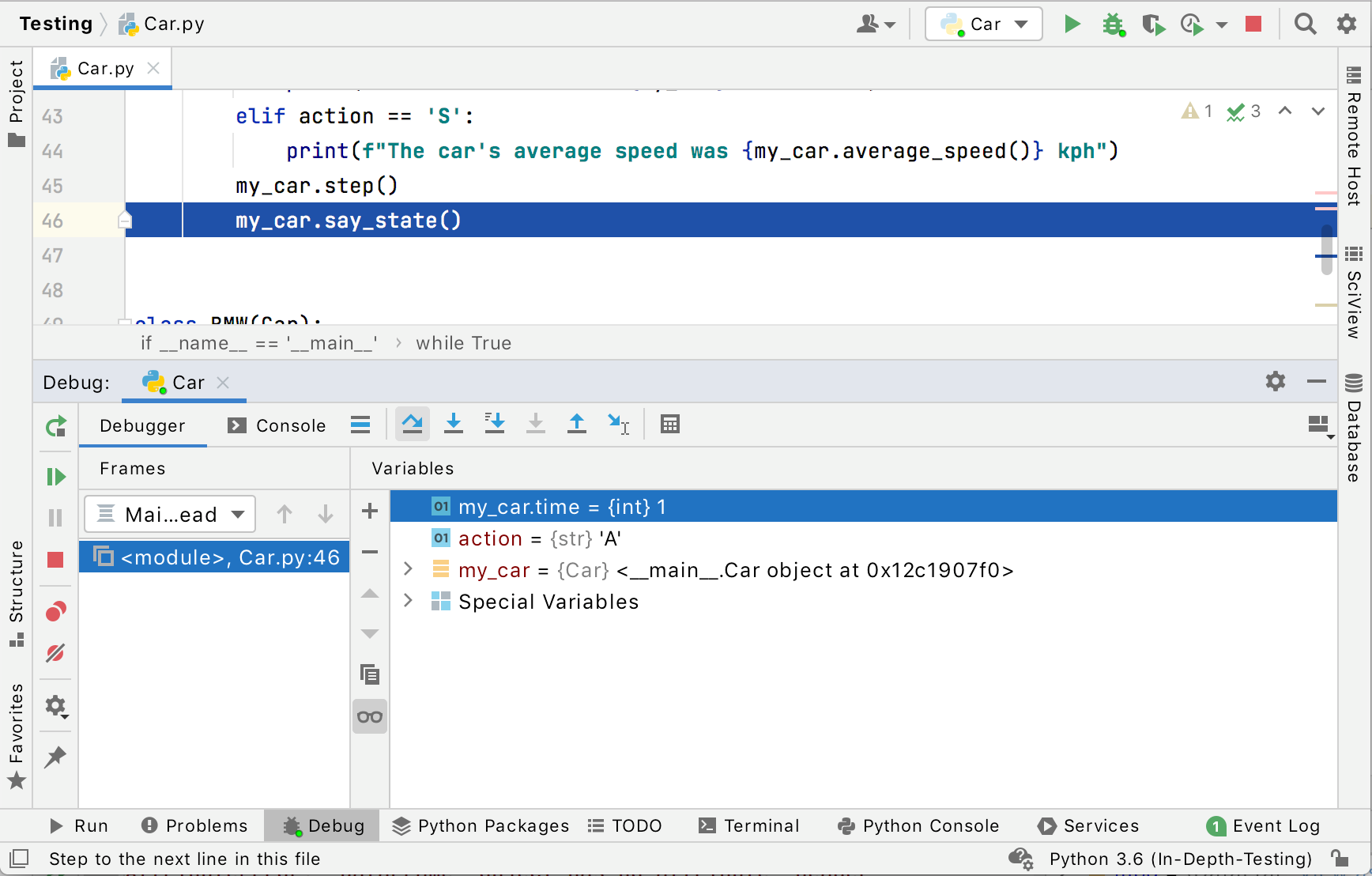
See Watches section for details.
Inline debugging
You may have noticed another PyCharm feature that makes it easy to see what your code is doing: the inline debugger. As soon as you press any breakpoint, PyCharm shows you the value of many of your variables right in the editor:
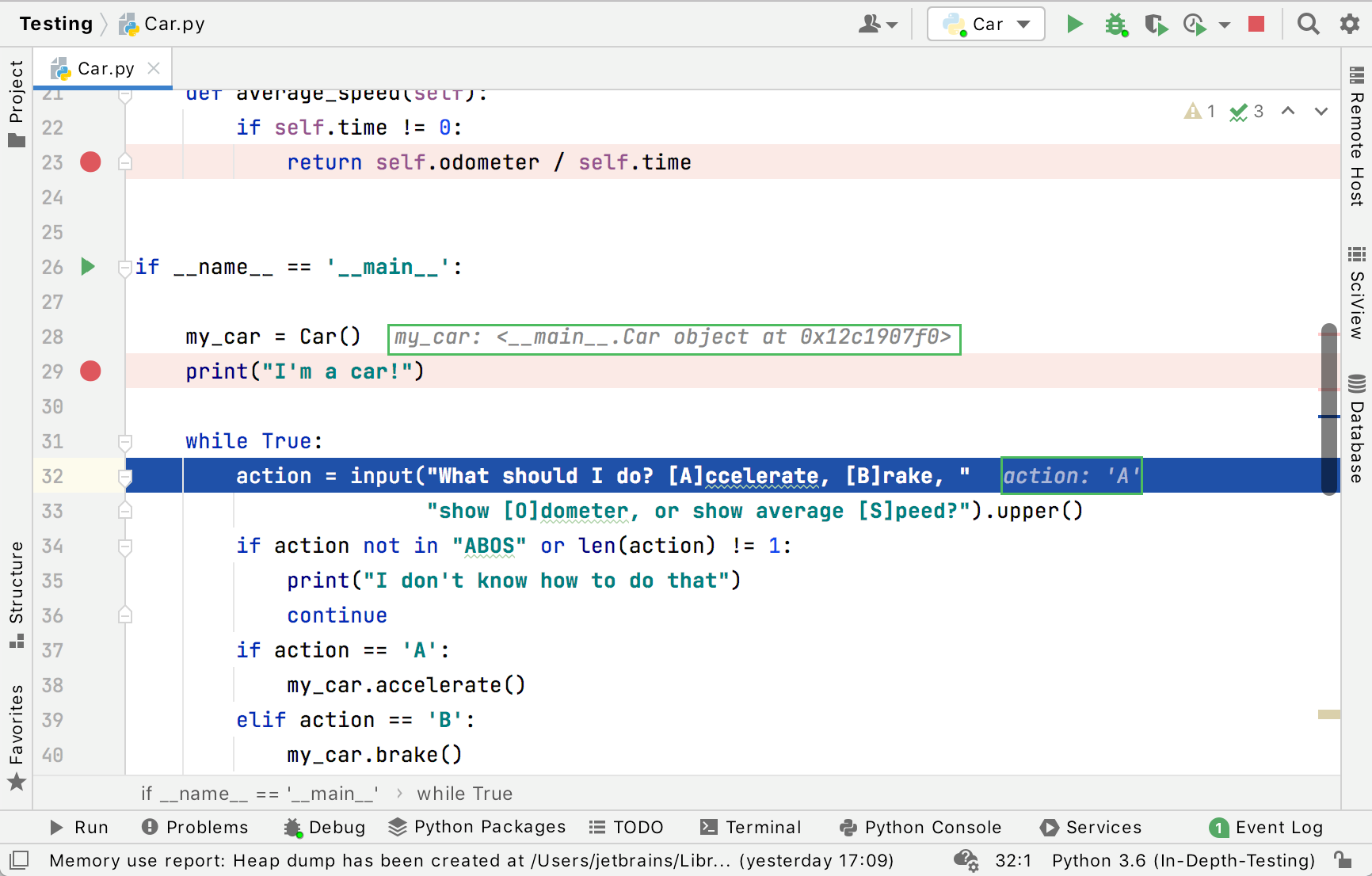
This inline debugging feature is enabled by default. If you don't see the inline debugging values, check that it's enabled using the settings icon on the Debug tool window:
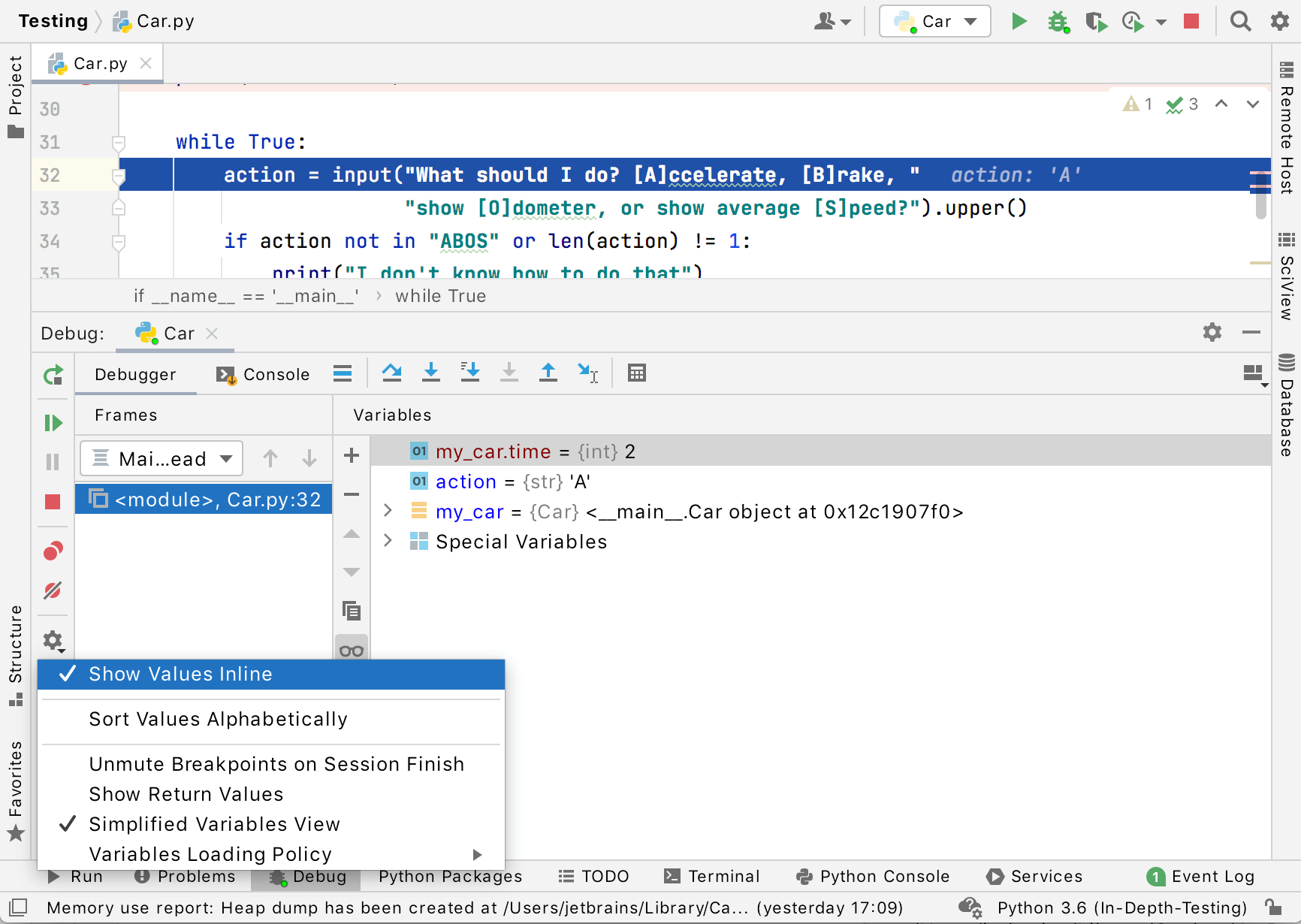
Evaluating expressions
Finally, you can evaluate any expression at any time. For example, if you want to see the value of a variable, click the button.
Then in the dialog that opens, click Evaluate:
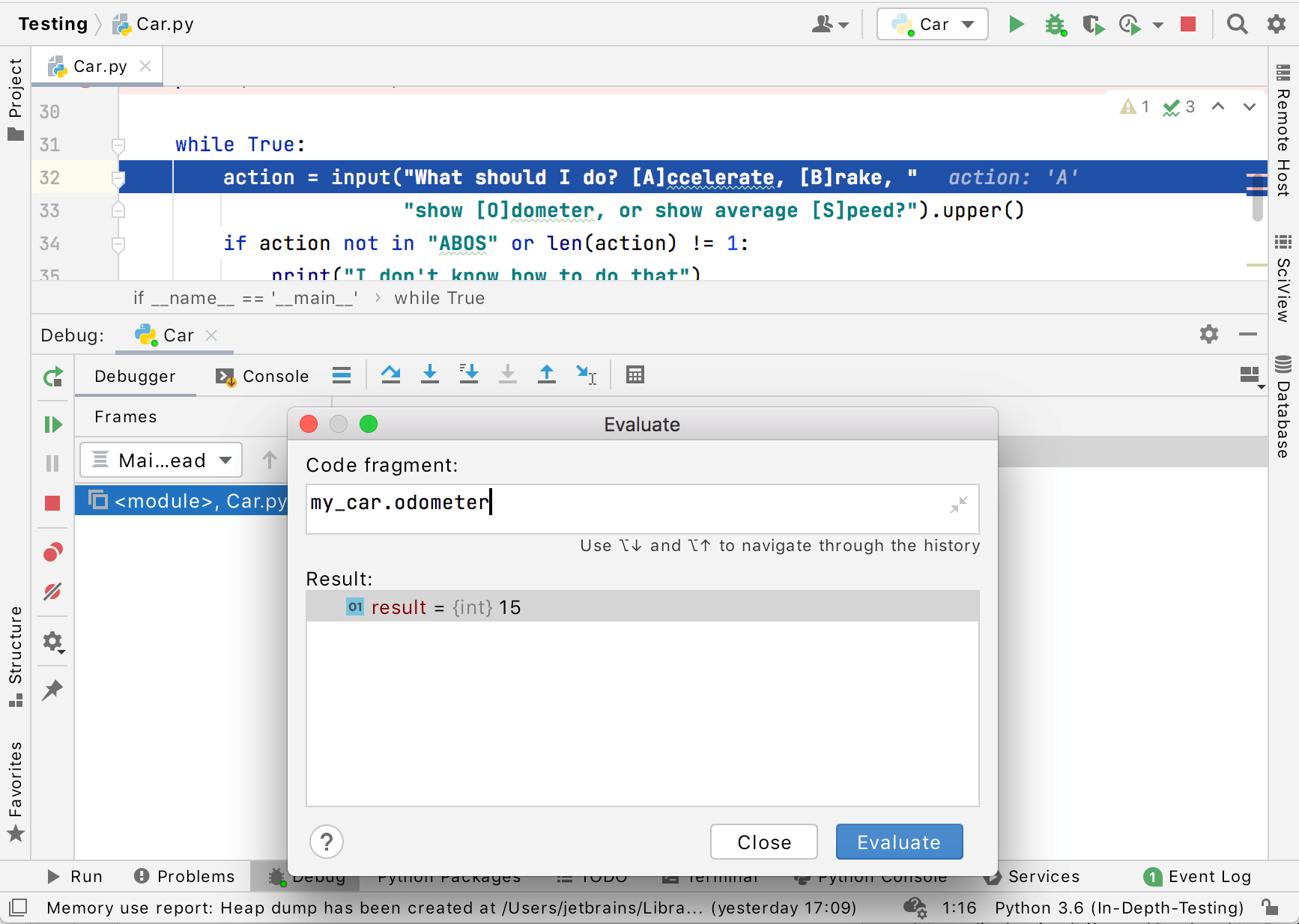
Actually, you could see the same thing with a watch. With evaluate expression you can do things that you can't do with a watch: you can change things.
For example, if you enter the desired value of the odometer, say, 50, and then continue stepping through your script, you will get the following:
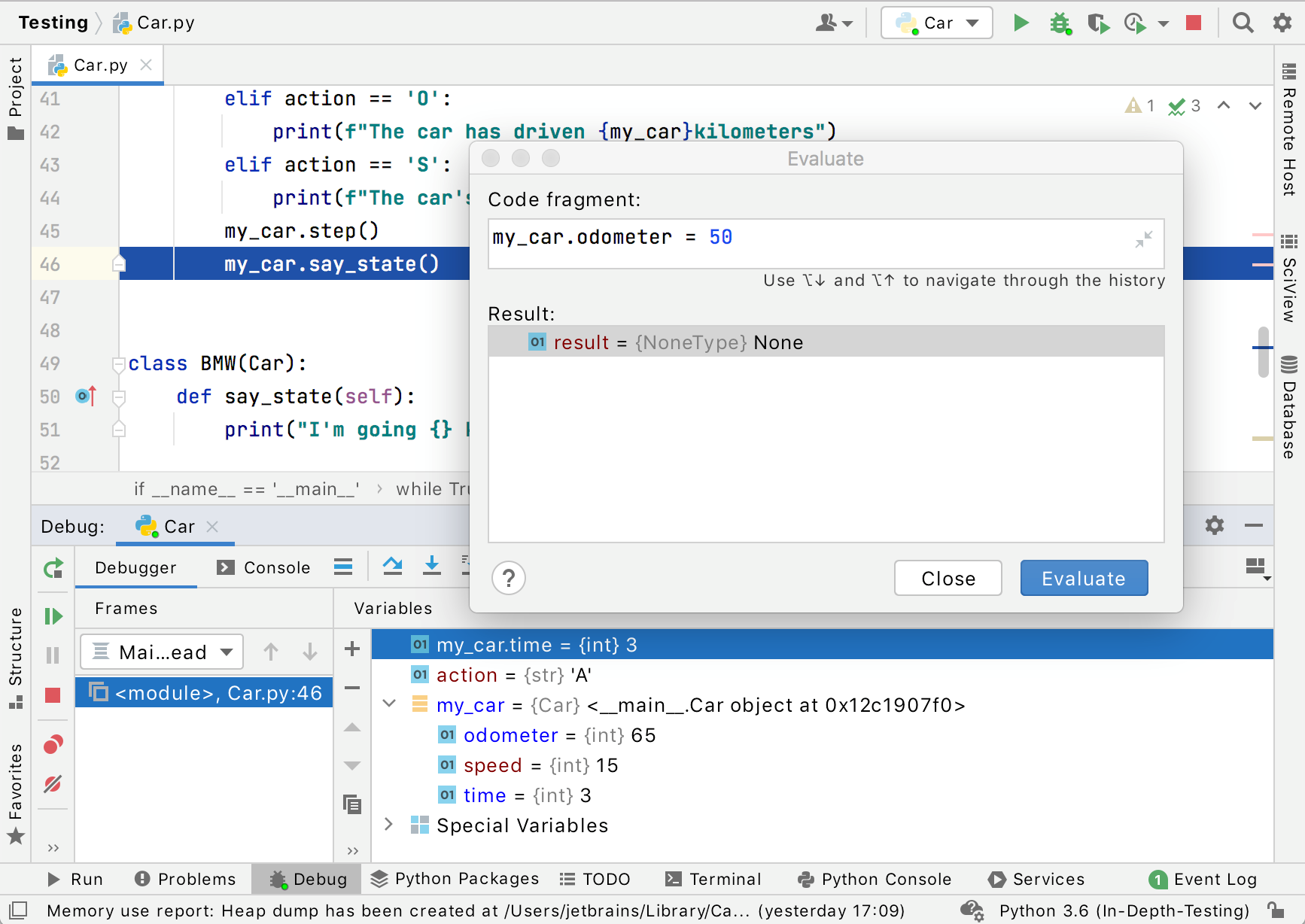
See the Evaluate expressions section for details.
You can enable Python console in the debugging Console. In this mode, you can enter some commands and expressions. For example, you can modify variable values.
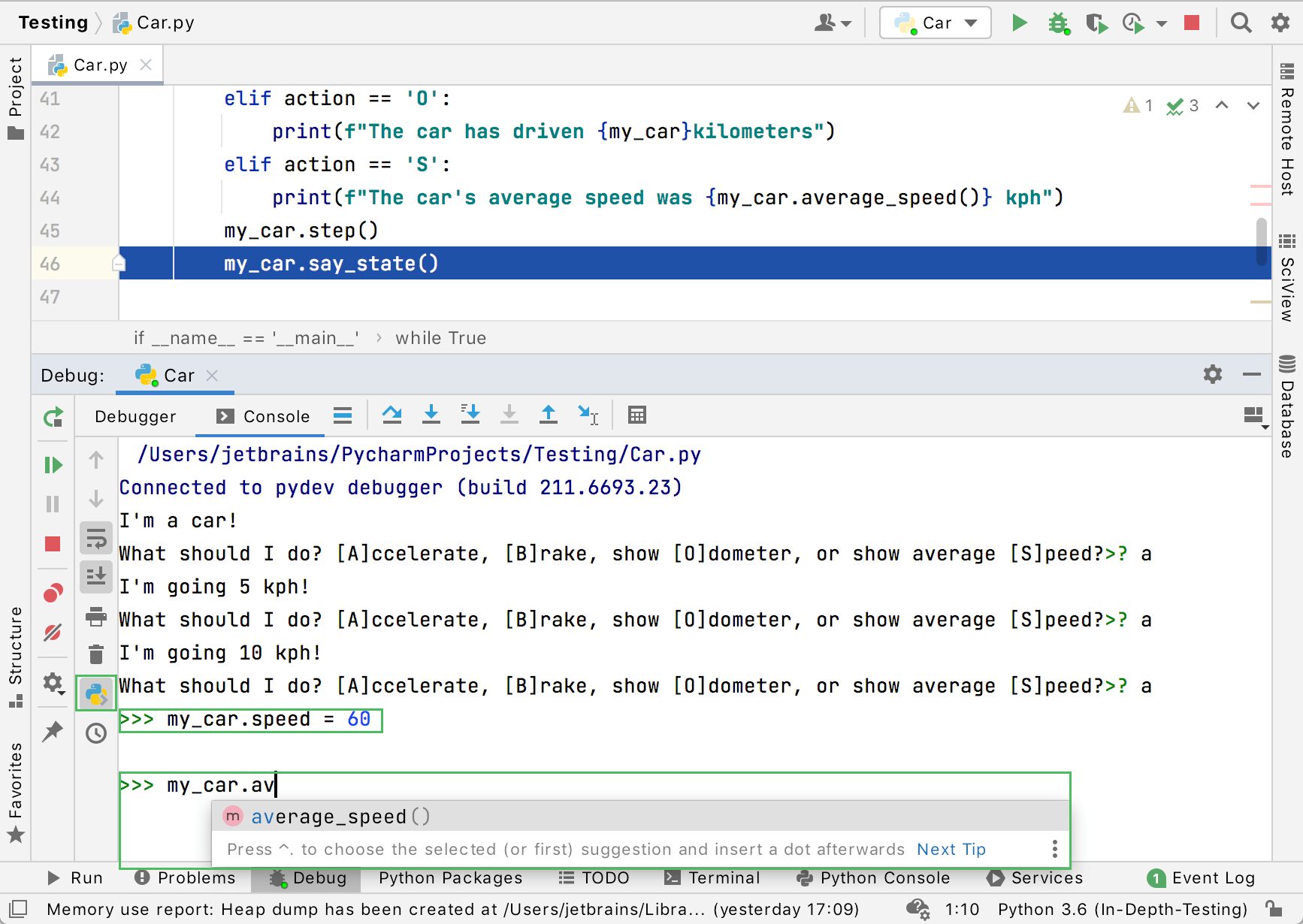
Summary
So, you've done it! Congrats! Let's repeat what you've done with the help of PyCharm:
Found out the origin of the problem
Set breakpoints
Stepped through your program
Created a watch
Evaluated an expression